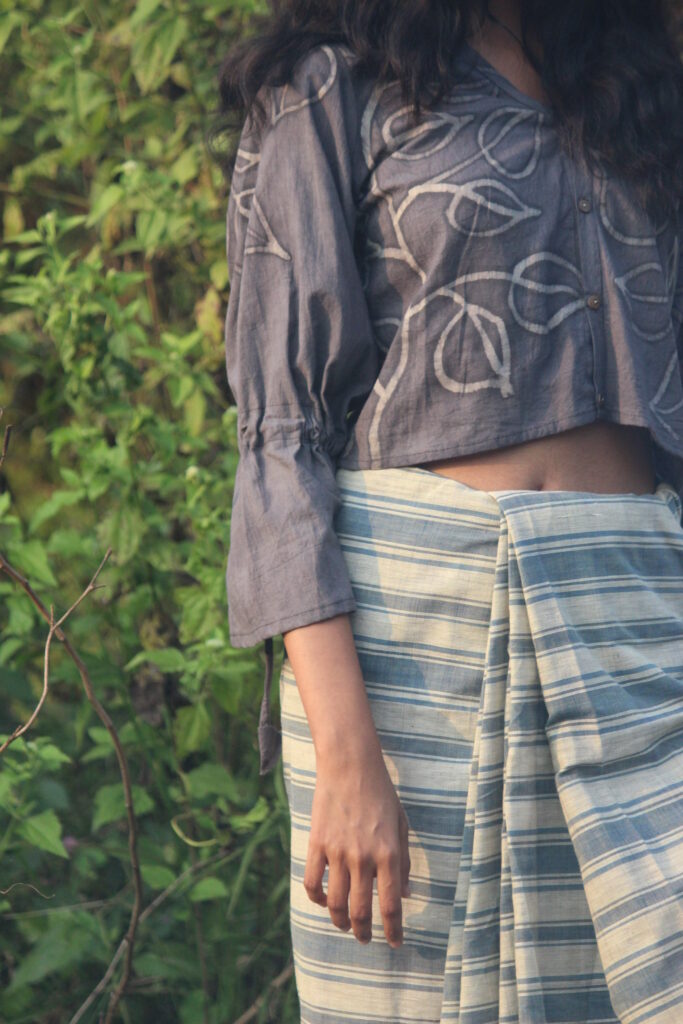In the world of fast fashion, Sustainability has become a conscious issue. Batik, a timeless and intricate art form stands as a beacon of hope, blending cultural heritage with the sustainable practices. This blog explores the harmonious relationship Batik fosters by redefining the modern wardrobes with versatility .
Introduction of Batik in Santiniketan
In the year 1927, Rabindranath Tagore visited Java, where he was deeply moved by the wonderful batik designs. Surendranath Kar who was an well-known artist and architect of Santiniketan, accompanied Tagore and learned the technique. During their visit, Raja of Java gifted Tagore a piece of Javanese batik which grabbed his attention.
In a letter to Pratima Devi, his daughter-in Law, Tagore intricately described the use of batik fabric in the costumes of Javanese dance, dramas, stages decoration and even home decoration. He introduced the wax resist dye textile to India, by bringing few pieces of Javanese batik to Santiniketan, West Bengal .
Batik went through a creative transformation in Santiniketan. It deals with mainly ornamental designs and motifs. Being inspired by the traditional floor design of Birbhum women named “Alpana”, the batik artists of Santiniketan developed unique collective style known as the “ Santiniketan Batik”. The unique art form is characterized by motifs like lotus, hibiscus, marigold, peacock, fish, and the geometric tassels. Typically, two to three colours are used primarily. Artists are increasingly opting for natural dyes to align with sustainable clothing practices. Originally crafted on cotton or silk, Batik has expanded to various sustainable fabrics, making it an important part of fashion narrative.
How Batik reflects sustainability
The process of Batik involves melted wax as a resist on fabric. The artisans apply wax on the white coloured fabric using brush or tool called canting. Further, the process of stamping is carried with copper stamp dipped in melted wax. Finally, the fabric is dyed.
Sustainability in fashion emphasizes on utilizing natural resources and reducing water waste. Batik reflects sustainability because of the following reasons :
- Natural resources: Most of the Batik artisans use biodegradable and renewable resources like organic cotton, hemp, and bamboo fabric.
- Eco-friendly dyes: Natural dyes sourced from minerals, plants, and fruits were used for traditional batik.
- Reducing industrial waste: The art of batik prioritizes handcrafting over mass machine production, thus decreasing the industrial waste.
- Longevity: The higher quality of batik and durable encouraging slow fashion.
Challenges in Modern Batik Production
Batik is inherently sustainable, yet it is facing challenges in the modern production techniques. The use of synthetic dyes and mass production techniques at present is resulting increasing industrial waste. However, many artisans are trying to practice the traditional techniques of using natural dyes and limited or small-scale production.
Evolution of Batik
Batik has evolved over years to match the modern aesthetics. Designers are incorporating batik into everyday wear, from tops to dresses and even accessories. The beautiful blend of traditional art form with contemporary style and sustainability at its core, Batik is acing sustainable fashion. Batik took a global stage by highlighting the cultural essence along with supporting the local artisans.

